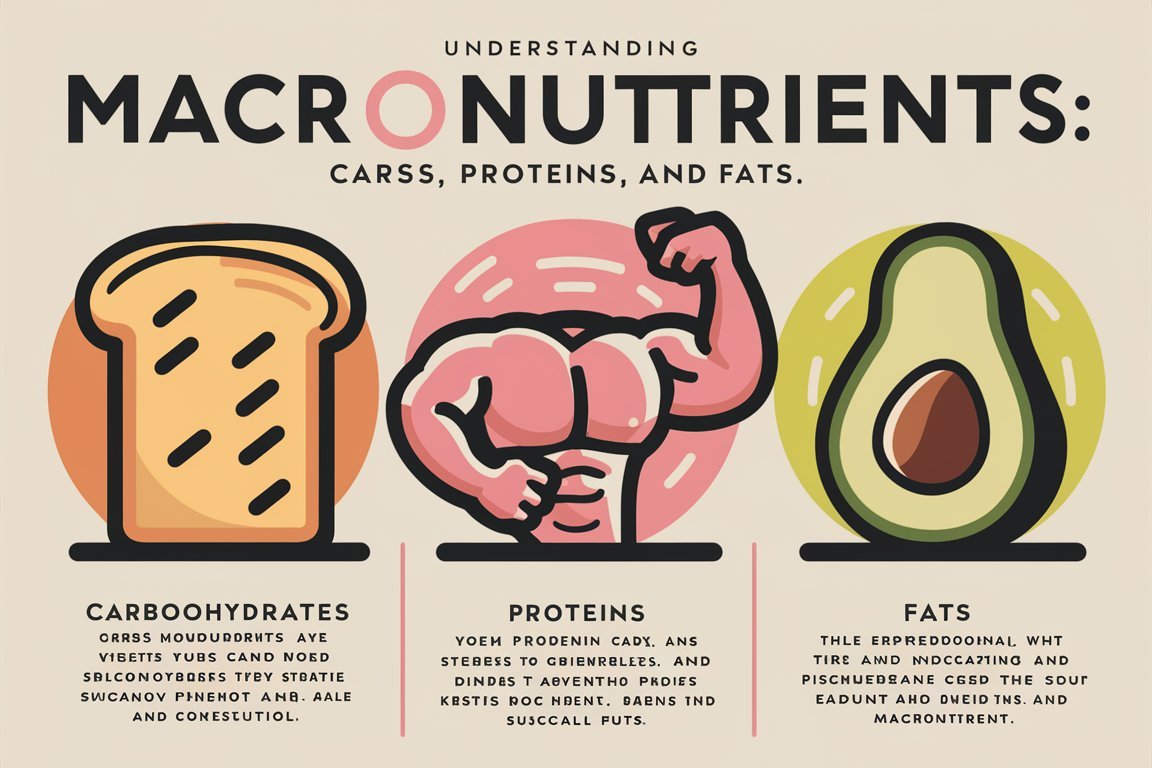Understanding Macronutrients: Carbs, Proteins, and Fats
Hey there, my young and curious friends of 2024! It’s your nutrition buddy from the past, Nita Sharda, here to take you on an exciting adventure into the world of macronutrients – the building blocks of a healthy and balanced diet.
Now, I know that the word “macronutrients” might sound a little intimidating at first, like something out of a science textbook. But trust me, understanding the role of carbs, proteins, and fats in our diets is actually a lot like playing a fun and fascinating game – a game that can help us feel our best, have tons of energy, and grow up strong and healthy!
So, are you ready to dive in and discover the superpowers of macronutrients? Let’s go!
What are Macronutrients?
First things first, let’s talk about what we mean when we say “macronutrients.” Macronutrients are the three main types of nutrients that our bodies need in large amounts to function properly: carbohydrates, proteins, and fats.
Think of macronutrients like the three musketeers of nutrition – they each have their own unique strengths and abilities, but they work best when they’re all together, helping each other out and keeping our bodies running smoothly.
Carbohydrates: The Energy Givers
Carbohydrates, or “carbs” for short, are like the fuel that keeps our bodies going. They are our main source of energy, and they help power everything from our brain to our muscles to our heart.
There are two main types of carbs:
Simple Carbs
Simple carbs are found in foods like fruit, milk, and sugar. They are called “simple” because they are quickly and easily digested by our bodies, giving us a quick burst of energy.
While it’s okay to enjoy simple carbs in moderation, it’s important not to eat too many of them, as they can sometimes cause our blood sugar levels to spike and then crash, leaving us feeling tired and cranky.
Complex Carbs
Complex carbs, on the other hand, are found in foods like whole grains, vegetables, and legumes. They are called “complex” because they take longer for our bodies to digest, giving us a slower and more sustained release of energy throughout the day.
Some great sources of complex carbs include:
- Whole grain bread and pasta
- Brown rice
- Oatmeal
- Quinoa
- Beans and lentils
- Vegetables like sweet potatoes, corn, and peas
By choosing complex carbs more often than simple ones, we can help keep our energy levels stable and avoid those pesky blood sugar crashes.
Proteins: The Body Builders
Proteins are like the building blocks of our bodies. They help us grow and develop, and they play a key role in repairing and maintaining our muscles, bones, skin, and other tissues.
Proteins are made up of smaller units called amino acids, which our bodies use to build and repair cells and make important molecules like hormones and enzymes.
There are many different types of protein foods, including:
- Meat, poultry, and fish
- Eggs
- Dairy products like milk, cheese, and yogurt
- Beans, lentils, and other legumes
- Nuts and seeds
- Soy products like tofu and tempeh
It’s important to include a variety of protein foods in our diets, as different types of protein have different amino acids that our bodies need.
Some tips for getting enough protein in your diet:
- Include a source of protein at every meal, like eggs for breakfast, a turkey sandwich for lunch, and chicken or fish for dinner
- Snack on protein-rich foods like nuts, seeds, or hard-boiled eggs
- Try plant-based protein sources like beans, lentils, and tofu, which are also high in fiber and other important nutrients
By getting enough protein in our diets, we can help our bodies grow and develop properly, and keep our muscles and bones strong and healthy.

Fats: The Nutrient Superheroes
Last but not least, let’s talk about the third macronutrient: fats. Fats sometimes get a bad rap, but the truth is that our bodies need a certain amount of healthy fats to function properly.
Healthy fats are important for:
- Providing energy
- Helping our bodies absorb certain vitamins (like vitamins A, D, E, and K)
- Supporting brain development and function
- Keeping our skin and hair healthy
There are different types of fats, and some are healthier than others:
Unsaturated Fats
Unsaturated fats are considered “healthy” fats because they can help lower our risk of heart disease and other health problems. They are found in foods like:
- Nuts and seeds
- Avocados
- Olive oil
- Fatty fish like salmon and sardines
Saturated Fats
Saturated fats are found in animal products like meat, butter, and cheese, as well as in some tropical oils like coconut and palm oil. While it’s okay to include some saturated fats in our diets, it’s important not to eat too much, as they can raise our risk of heart disease and other health problems.
Trans Fats
Trans fats are a type of unhealthy fat that are found in some processed and fried foods. They are created when liquid oils are turned into solid fats through a process called hydrogenation. Trans fats have been linked to an increased risk of heart disease and other health problems, so it’s best to limit or avoid them as much as possible.
By choosing healthy fats more often than unhealthy ones, and eating them in moderation as part of a balanced diet, we can help keep our bodies and brains functioning at their best.
Putting it All Together: Balancing Macronutrients
Okay, so now that we know all about the three macronutrients and why they’re important, let’s talk about how to put it all together and create a balanced diet that works for you.
The key to a healthy and balanced diet is to include a variety of foods from all three macronutrient groups – carbs, proteins, and fats – in the right proportions for your individual needs.
Here are some general guidelines for balancing your macronutrients:
- Aim to get about 45-65% of your daily calories from carbs, focusing on complex carbs like whole grains, fruits, and vegetables
- Get about 10-35% of your daily calories from protein, choosing lean sources like poultry, fish, beans, and tofu
- Aim for about 20-35% of your daily calories from healthy fats, like those found in nuts, seeds, avocados, and olive oil
Of course, these are just general guidelines, and your individual needs may vary depending on factors like your age, sex, height, weight, activity level, and overall health.
Some tips for creating a balanced diet that works for you:
- Aim to eat a variety of different foods from all three macronutrient groups at each meal and snack
- Pay attention to your hunger and fullness cues, and eat when you’re hungry and stop when you’re full
- Choose whole, minimally processed foods whenever possible, like fruits, vegetables, whole grains, and lean proteins
- Limit your intake of added sugars, unhealthy fats, and highly processed foods
- Stay hydrated by drinking plenty of water throughout the day
- Don’t be afraid to experiment with new foods and flavors, and find what works best for your body and taste buds!
Remember, a balanced diet is all about finding what works for you and your individual needs and preferences. By paying attention to your body’s signals and making small, sustainable changes over time, you can develop a healthy and balanced relationship with food that will serve you well for years to come.
The Benefits of Balancing Macronutrients
So, why is it so important to balance our macronutrients, anyway? Well, my young friends, the benefits of a balanced diet that includes all three macronutrients are almost too many to count! Here are just a few of the amazing ways that balancing your carbs, proteins, and fats can help you feel your best:
- Provides sustained energy throughout the day
- Supports healthy growth and development
- Helps build and repair muscles, bones, and other tissues
- Supports brain function and mental clarity
- Helps maintain a healthy weight
- Reduces the risk of chronic diseases like heart disease, diabetes, and certain cancers
- Supports a healthy immune system
- Promotes healthy skin, hair, and nails
By giving our bodies the right balance of macronutrients, we can help them function at their best and feel amazing from the inside out.













Leave a Reply